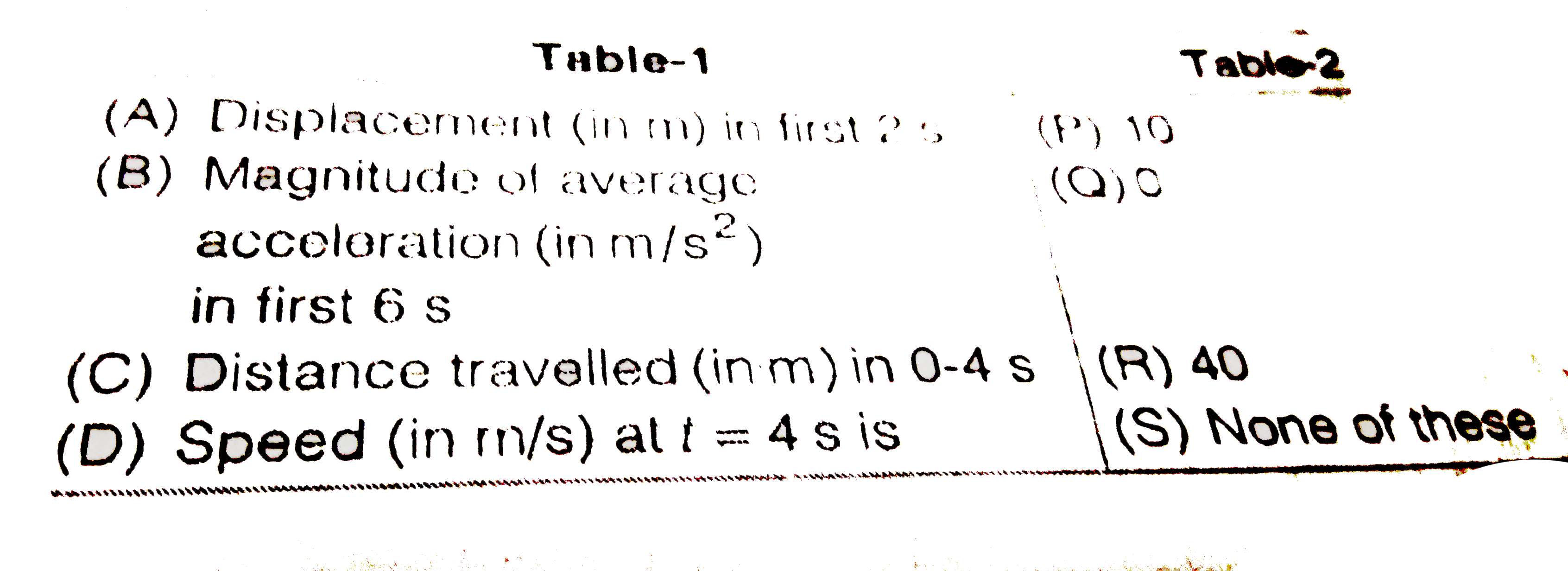A ball of mass 0.2 kg is thrown vertically upwards by applying a force by hand. If the hand moves 0.2 m while applying the force and the ball goes upto 2 m height further, find the magnitude of the force. (Consider g=10m/s2).
(a) 4N
(b) 16N
(c) 20N
(d) 22N
The correct Answer is:D
To solve the problem, we need to find the magnitude of the force applied to the ball while it is in the hand. We will use the work-energy principle to determine this force.
1. Identify the Given Data:
- Mass of the ball, m=0.2kg
- Distance moved by the hand while applying the force, d=0.2m
- Additional height gained by the ball after leaving the hand, h=2m
- Acceleration due to gravity, g=10m/s2
2. Calculate the Total Height:
The total height H reached by the ball is the sum of the distance moved by the hand and the additional height:
H=d+h=0.2m+2m=2.2m
3. Calculate the Work Done Against Gravity:
The work done against gravity when the ball rises to height h is given by:
Wgravity=mgh=0.2kg×10m/s2×2m=4J
4. Calculate the Work Done by the Hand:
The work done by the hand while applying the force over distance d is given by:
Whand=F⋅d
where F is the force applied by the hand.
5. Apply the Work-Energy Principle:
According to the work-energy principle, the total work done on the ball is equal to the change in kinetic energy. Since the ball starts from rest, the initial kinetic energy is 0. The final kinetic energy when it leaves the hand can be expressed as:
Whand−Wgravity=ΔKE
Since the ball reaches the maximum height, the final kinetic energy at the top is also 0. Thus:
Whand−4J=0
Therefore:
Whand=4J
6. Substitute and Solve for the Force:
Now substituting the work done by the hand into the equation:
F⋅0.2m=4J
Solving for F:
F=4J0.2m=20N
Final Answer:
The magnitude of the force applied to the ball is 20N.
- Mass of the ball, m=0.2kg
- Distance moved by the hand while applying the force, d=0.2m
- Additional height gained by the ball after leaving the hand, h=2m
- Acceleration due to gravity, g=10m/s2
The total height H reached by the ball is the sum of the distance moved by the hand and the additional height:
H=d+h=0.2m+2m=2.2m
The work done against gravity when the ball rises to height h is given by:
Wgravity=mgh=0.2kg×10m/s2×2m=4J
The work done by the hand while applying the force over distance d is given by:
Whand=F⋅d
where F is the force applied by the hand.
According to the work-energy principle, the total work done on the ball is equal to the change in kinetic energy. Since the ball starts from rest, the initial kinetic energy is 0. The final kinetic energy when it leaves the hand can be expressed as:
Whand−Wgravity=ΔKE
Since the ball reaches the maximum height, the final kinetic energy at the top is also 0. Thus:
Whand−4J=0
Therefore:
Whand=4J
Now substituting the work done by the hand into the equation:
F⋅0.2m=4J
Solving for F:
F=4J0.2m=20N
The magnitude of the force applied to the ball is 20N.
Topper's Solved these Questions
- HEAT AND THERMODYNAMICSBOOK - SUNIL BATRA (41 YEARS IITJEE PHYSICS)CHAPTER - HEAT AND THERMODYNAMICSEXERCISE - JEE Main And Advanced
219 Videos
- MECHANICAL PROPERTIES OF MATTER AND FLUIDSBOOK - SUNIL BATRA (41 YEARS IITJEE PHYSICS)CHAPTER - MECHANICAL PROPERTIES OF MATTER AND FLUIDSEXERCISE - Subjective Problems
1 Videos
Similar Questions
A ball of mas 2gm is thrown vertically upwards with a speed of 30m/s from a tower of height 35m. (Given g=10m/s2)

View SolutionA cricket ball of mass 0.15 kg is thrown vertically up by a bowling machine so that it rises to a maximum height of 20 m after leaving the machine. If the part pushing the ball applies a constat force F on the ball and moves horizontally a distance of 0.2 m while launching the ball, the value of F (in N) is (g=10ms−2) __________.
View Solution
Knowledge Check
A particle of mass 100 g is thrown vertically upwards with a speed of 5m/s. The work done by the force of gravity during the time the particle goes up is
A−0.5JB−1.25JC1.25 JD0.5 JA particle of mass 100 g is thrown vertically upwards with a speed of 5m/s. The work done by the force of gravity during the time the particle goes up is
A−0.5JB−1.25JC1.25 JD0.5 JA ball of mass M is thrown vertically upwards. Another ball of mass 2M is thrown at an angle θ with the vertical. Both of them stay in air for the same period of time. The heights attained by the two are in the ratio
A1:2B2:1C1:1D1:cosθ
A ball thrown vertically upwards with an initial velocity of 1.4 m/s returns in 2s. The total dispalcement of the ball is
View SolutionA ball is thrown vertically upward with a velocity of 20 m/s . After 3s , the magnitude of its displacement is (take g = 10 m/s2)
View SolutionA ball of mass 0.2 kg moves with a velocity of 20m/sec and it stops in 0.1 sec , then the force on the ball is
View SolutionA ball of mass 0.2 kg thrown vertically upwards with a velcity of 30 m/s, reaces the highest point in 2.5 second. What is the air resistance experienced by the ball during its vertical motion? [g=10m/s2]
View SolutionA ball of mass 150 g moving with an acceleration 20 m/s2 is hit by a force, which acts on it for 0.1 s. The impulsive force is
View Solution
